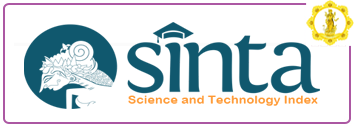Pendekatan Kontekstual pada Mata Kuliah Bahasa Bali di Fakultas Brahma Widya UHN I Gusti Bagus Sugriwa Denpasar
DOI:
https://doi.org/10.25078/ds.v3i1.2383Keywords:
Contextual Approach, Learning Outcomes, Balinese LanguageAbstract
The Balinese language courses at the Brahma Widya Faculty of UHN I Gusti Bagus Sugriwa Denpasar provides additional knowledge to students in practice in social life in Bali. But the existence of Balinese language courses seems to be a difficulty for multicultural students, especially those from outside Bali. For this reason, classroom action research consists of 2 cycles, each cycle consisting of planning, implementation, observation and reflection. Each cycle consists of 2 meetings, all of which aim to obtain data and information about the application of a contextual approach in improving the understanding of Balinese language course material with multicultural students at UHN I Gusti Bagus Sugriwa Denpasar. The research instruments are direct observation, closed questionnaire and essay test. This research was conducted at the Department of Hindu Theology Semester III Faculty of Brahma Widya UHN I Gusti Bagus Sugriwa Denpasar with a total of 12 students. The data in this study were collected in stages through observations during the lecture process during the study and data from learning outcomes tests in each cycle. After that the data were analyzed qualitatively using descriptive statistics including the average score, frequency table, minimum and maximum values and percentages. The results showed that the contextual approach to Balinese language courses at the Theology Department of the Brahma Widya Faculty of UHN I Gusti Bagus Sugriwa Denpasar showed an increase in student learning outcomes based on observations during classroom action research which was seen from the average pre-cycle score, cycles I to II. After being analyzed from the research results, namely from the pre-cycle of 60% or included in the criteria less, the first cycle obtained 74.33% results with the average criteria being quite good, and the second cycle 81.5% or the average student success rate was in the good category.









